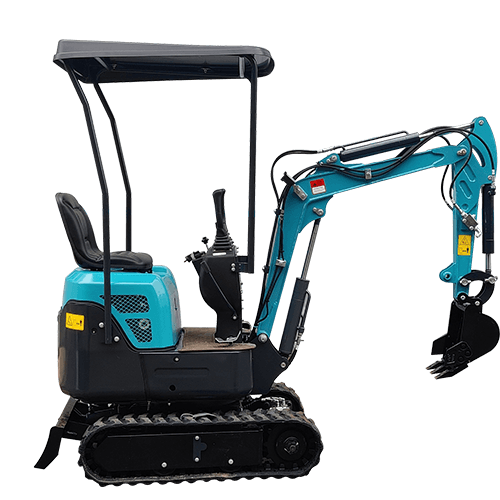Email: [email protected] Whatsapp: 8618266768780
Understanding the Different Types of Excavator Backhoe Buckets
1. Introduction

The Role of Buckets in Excavator Backhoe Operations
Excavator backhoe buckets are the workhorses of construction and excavation projects. They come in various types, each designed for specific tasks and soil conditions. Understanding the different types of excavator backhoe buckets and their applications is crucial for optimizing machine performance and project efficiency. In this comprehensive guide, we explore the various bucket types, their features, and factors to consider when selecting the right one for your excavator backhoe.
2. Types of Excavator Backhoe Buckets
2.1. General Purpose Buckets
General purpose buckets are versatile and commonly used for a wide range of tasks, including digging, trenching, and material handling. They are an excellent choice for many construction and excavation projects.
2.2. Digging Buckets
Designed for precision digging, digging buckets have a narrower profile and sharper teeth. They excel in excavating soil, gravel, and other materials, making them ideal for foundation work and utility installations.
2.3. Grading Buckets
Grading buckets have a flat bottom and wide, shallow design, making them perfect for leveling and grading tasks. They help achieve precise grading and surface finishing in landscaping and roadwork projects.
2.4. Skeleton Buckets
Skeleton buckets feature a grid-like structure, allowing fine materials like sand, silt, and debris to sift through while retaining larger objects. They are commonly used in landscaping and environmental cleanup.
2.5. Trenching Buckets
Trenching buckets are specifically designed for digging narrow, deep trenches. They are essential for utility installations, drainage systems, and pipeline work.
2.6. Cleanup Buckets
Cleanup buckets have a wider profile and a curved bottom, making them effective for clearing loose material and debris. They are commonly used in demolition and cleanup operations.
3. Factors Influencing Bucket Selection
3.1. Job Requirements
The type of work you’re performing dictates the choice of bucket. Consider the specific tasks and requirements of your project when selecting a bucket type.
3.2. Soil and Material Types
Different soil and material types require specialized buckets. Consider the consistency and density of the material you’ll be excavating or handling.
3.3. Machine Size and Compatibility
Ensure that the selected bucket is compatible with your excavator backhoe model. Smaller machines may require lighter buckets, while larger machines can handle heavier ones.
3.4. Attachment Versatility
Some projects may benefit from the versatility of a general purpose bucket, which can handle various tasks without frequent attachment changes.
4. Bucket Attachments and Compatibility
4.1. Quick Couplers
Quick couplers allow for swift attachment changes, enabling operators to switch between bucket types efficiently. Ensure that your excavator backhoe supports quick coupler systems.
4.2. Compatibility with Excavator Backhoe Models
Check compatibility between the bucket and your machine’s specifications, including weight capacity and hydraulic compatibility. Consult your equipment manufacturer for guidance.
5. Maintenance and Care for Excavator Backhoe Buckets
 5.1. Cleaning and Inspection
5.1. Cleaning and Inspection
Regularly clean and inspect your buckets for wear and damage. Proper maintenance prolongs their lifespan and ensures optimal performance.
5.2. Welding and Repairs
Address any bucket damage promptly through welding or repairs. Neglecting damage can lead to more extensive and costly issues.
6. Case Studies: Real-World Applications of Different Bucket Types
Explore real-world examples of how different bucket types have been used effectively in various construction and excavation projects.
7. Frequently Asked Questions (FAQs)
Q1. Can I use a general purpose bucket for trenching tasks?
While it’s possible, it’s not the most efficient choice. Trenching buckets are specifically designed for trenching and will yield better results.
Q2. How can I determine the right bucket size for my excavator backhoe?
Consult your machine’s specifications and consider the depth and width of the trenches or excavations you’ll be performing.
Q3. What should I do if my bucket teeth are worn or damaged?
Replace worn or damaged bucket teeth promptly to maintain digging efficiency and avoid further damage to the bucket.
Q4. Are there any safety precautions I should take when changing buckets?
Always follow safety guidelines when changing attachments. Ensure the machine is turned off, and use proper safety equipment.
8. Conclusion
Selecting the right excavator backhoe bucket is a crucial decision that can significantly impact the efficiency and success of your excavation and construction projects. By understanding the various bucket types, their applications, and the factors that influence selection, you can make informed choices that optimize your machine’s performance and productivity. Regular maintenance and care further ensure that your buckets remain in top-notch condition, delivering reliable results for years to come.
About Us
Shandong Qilu Industrial Co., Ltd. is a professional manufacturer and exporter integrating the development and production of excavators, loaders and tractors. We provide the best service, absolutely.
Recent Posts
Video demo
-1.png)
Contact Us Today!
Any question, quote or inquiry? Click the button to send message.
Qilu Industrial will always here to help.

 5.1. Cleaning and Inspection
5.1. Cleaning and Inspection